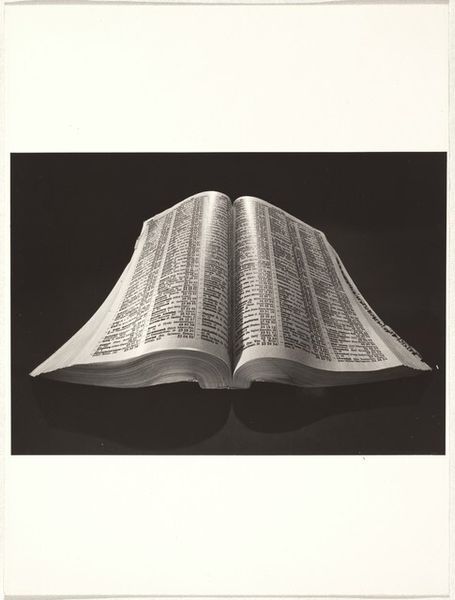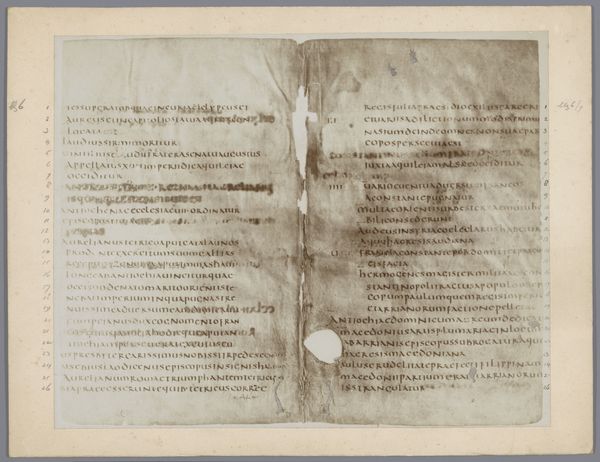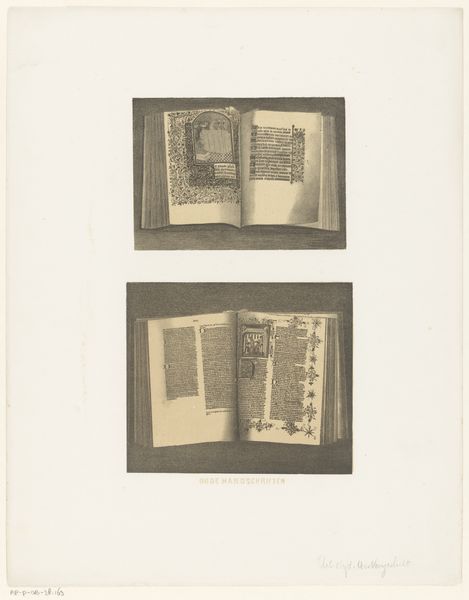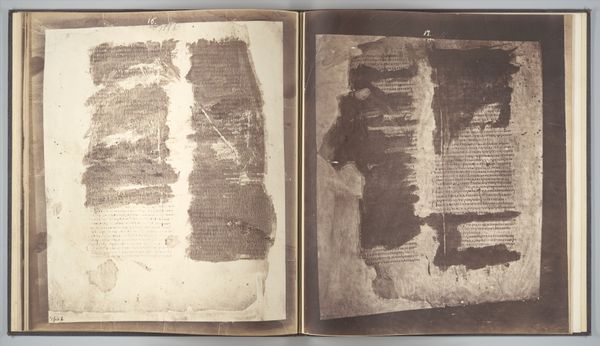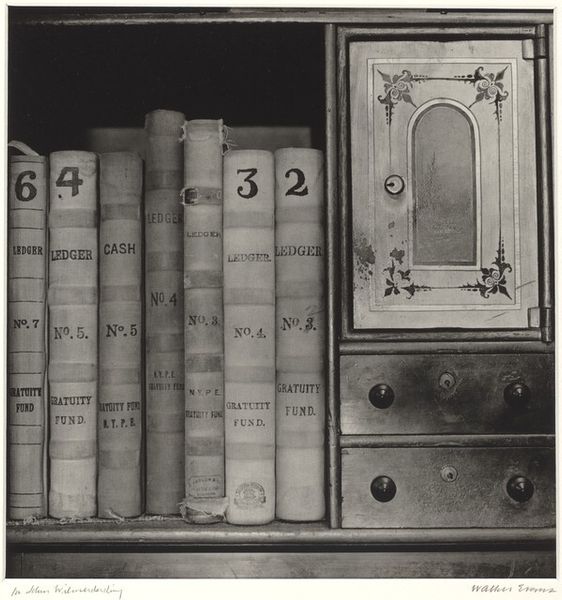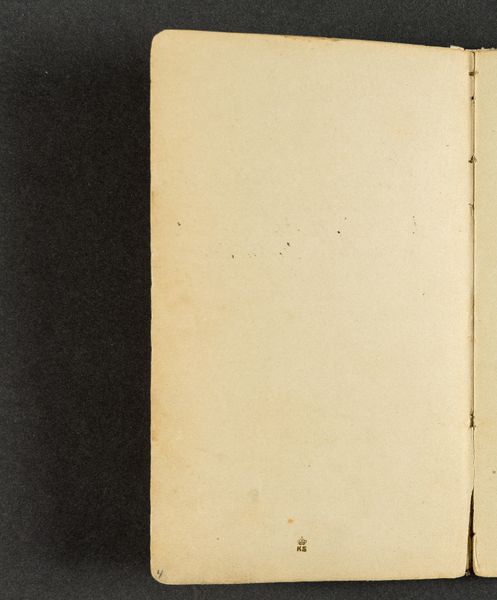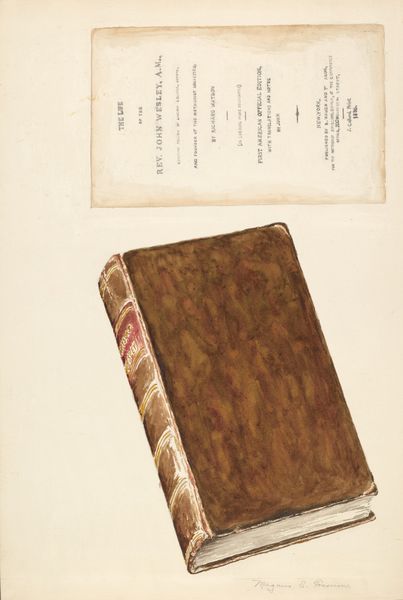
photography, gelatin-silver-print
#
portrait
#
vintage
#
photography
#
gelatin-silver-print
#
ashcan-school
#
realism
Dimensions: image: 17.5 × 23.1 cm (6 7/8 × 9 1/8 in.) sheet: 20.2 × 25.2 cm (7 15/16 × 9 15/16 in.)
Copyright: National Gallery of Art: CC0 1.0
Curator: Here we have Dorothea Lange's 1941 photograph, "Hutterite Bible, west of Vermillion, South Dakota," a gelatin silver print. What's your initial impression? Editor: My first thought is one of austerity. It's heavy with stillness. The textures, from the crumbling wall to the worn pages of the Bible, evoke a solemn mood, don't they? Curator: Absolutely. I think Lange has a knack for finding those profound moments in ordinary settings. The book, positioned prominently, becomes an emblem, almost a character, set against the harshness of the environment. Editor: Visually, the open book on a cloth-draped table feels almost staged, doesn’t it? Like an offering on an altar. I am really interested in the table itself; what do you think is supporting the Bible? I feel as if the texture indicates linen but it is hard to know for sure in black and white photography. What do you make of this impression? Curator: I do; this creates an air of significance beyond its sheer presence as a heavy book. As for its making, I know Lange's focus was often on depicting the lives of marginalized communities, so this could well be about faith as a sustaining force, especially during hardship. Editor: That resonates. There's something deeply ingrained about how we carry our stories forward—visually and in our sacred texts. And, you know, looking closer at the opened pages of the Bible and the elaborate ornamental print that is on the page reminds me of how visual information served as a communication vehicle. This must have meant so much for people's sensemaking! Curator: Definitely, Lange offers an enduring symbol of how visual artifacts can reflect cultural continuity in isolated circumstances. It shows resilience—not just surviving, but flourishing in one’s own unique way. Editor: It certainly does—faith, resilience, and the simple grandeur of bearing one’s stories. Quite a compelling blend that has stayed with me now.
Comments
No comments
Be the first to comment and join the conversation on the ultimate creative platform.
